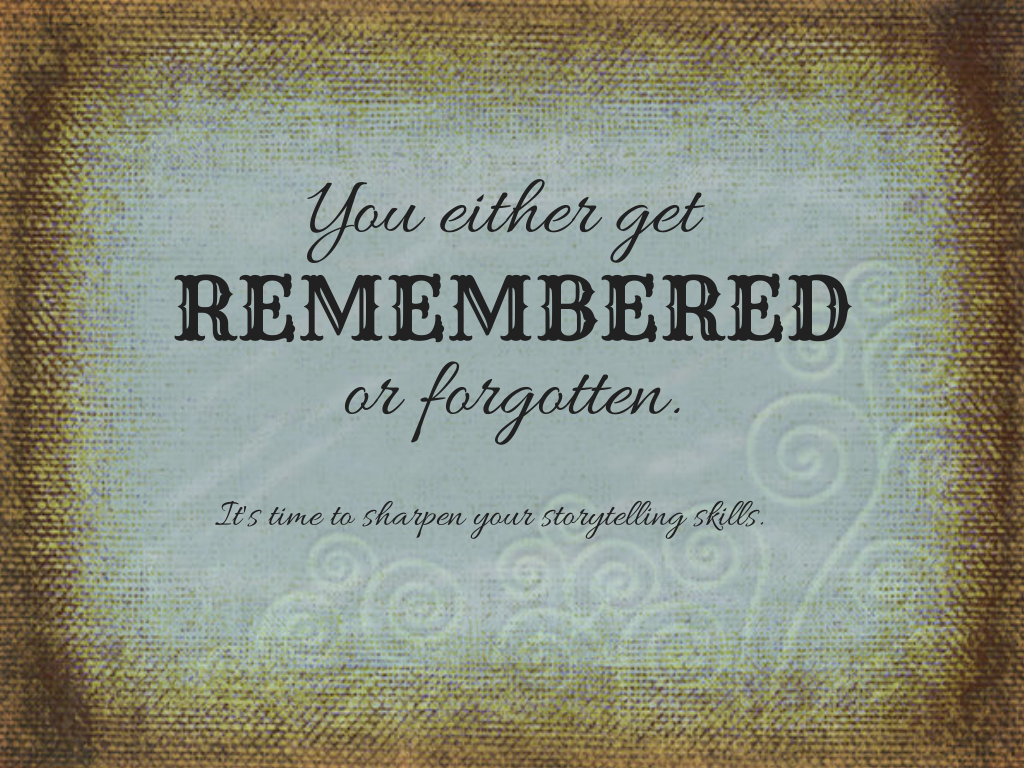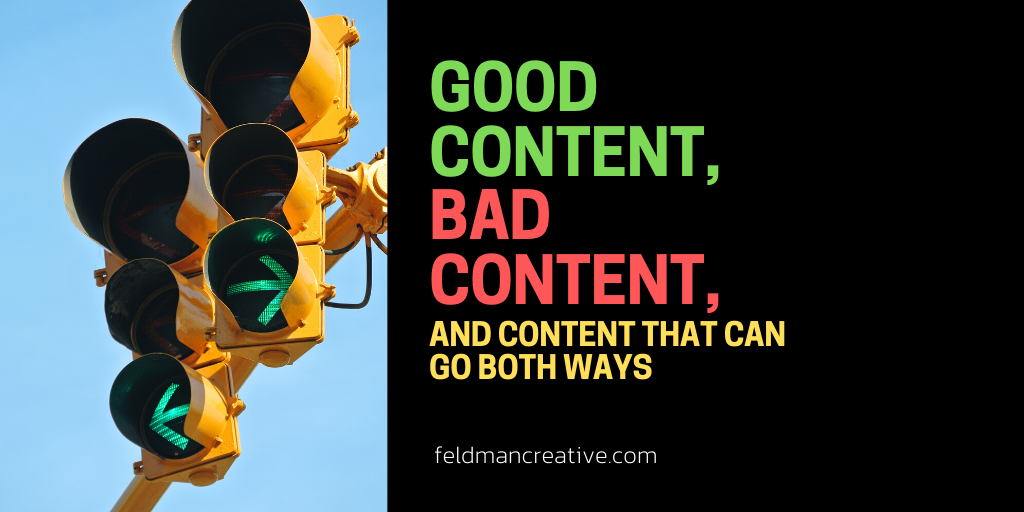Inbound marketing focuses on the power of pull. You do everything possible to anticipate the needs and wants of your buyers. You then invest heavily in different messages and media to get clicks, appear on whichever rectangular piece of glass flickers before the prospect, and command their undivided attention for a spell. And you usually fail.
We are all hopelessly distracted. It’s not a disorder — it’s the new world order.
Can I have your attention, please?
Whichever methods we put in play with our marketing, we’re powerless unless we’re able to get a prospect to pay attention. It doesn’t come easy. As long as we’re online, on earth, and in a media-centric society, there will always be a shiny object scattering, shattering, and battering our focus.
Okay, when you practice inbound marketing for a while, you start getting good. You figure out how to write a headline cursors and fingers are magnetically attracted to. But a click is nothing more than a click until you, the messenger, truly click with your customer.
You either get remembered or forgotten.
I’ve been tossing that little homegrown axiom out there for years. The gauntlet I’m laying down here: Your goal is to be remembered.
“I’ve learned that people will forget what you said, people will forget what you did, but people will never forget how you made them feel.” — Maya Angelou
As you know, it’s damn hard to be remembered for what you wrote or said. And who needs another impossibly lofty goal? The goal, then, is to say or do something memorable by sparking an emotional response.
The way to move someone is to tell a good story.
Stories glue us together. It doesn’t matter if they’re told in a book, from a podium, on a big screen, on the walls of a cave, or on Facebook. We live through and learn from stories. Whether it’s via TV, YouTube, or iTunes, we open our arms to take them in and open our minds to allow them to take us away.
At the end of another hard day of bucking up and sucking up at the office, we crave nothing more than laying down and taking a journey with a cast colorful of characters.
Stories distract us from our distractions.
Author Jonathan Gottschall wrote, “The human mind is a wanderer by nature. The daydream is the mind’s default state.”
The proven formula for breaking through and taming the wandering mind of the consumer is to engage them with a story. To succeed is to steal a chance to grab a reader’s or a viewer’s focus for a short while.
When we get wrapped up in the world of the story’s characters, we actually feel what the characters feel. Immunities are penetrated. Distractions desist. We’re hooked in an amazingly profound way.
Freelance journalist Emma Johnson began a blog post featured on Success.com, “Once Upon a Time in Marketing,” with a quote:
“There is a reason humans are so fascinated with stories. People are interested in transformation, and in a well-told story; they see themselves in that story.” — Nancy Duarte, author of Resonate: Present Visual Stories that Transform Audiences
Johnson’s article presents a series of interesting insights from top marketers as well as some of the best examples of brand storytelling you’ll find.
Stories influence human behavior.
How does it feel to witness Romeo poison himself and then see Juliet stab herself in the heart? It hurts. What about when Shoeless Joe Jackson and the Chicago Black Sox arrive to play on Kevin Costner’s baseball field? It’s dreamy. And how can you not rejoice when the memory-impaired, but good-hearted blue tang reunites a stressed out clownfish named Marlin with his beloved son, Nemo?
Perhaps these one-line plot summaries invoked these extreme sensations all over again.
“Stories aren’t just fun escapism — they have an almost spooky ability to mold our thinking and behavior.” — Jonathan Gottschall, author of The Storytelling Animal: How Stories Make Us Human
This is the power of storytelling. It’s infinitely more moving than seeing how laundry detergent removes a coffee stain from a white dress shirt or a crash test dummy saved by an airbag. Stories wield power. They move our emotions, influence our behavior, shape our values, and affect our actions.
Everyone has a story.
You don’t have to have Mark Twain’s literary skills to put storytelling in your marketing arsenal. You simply need to understand your audience and learn the essential elements of the story’s basic formula.
Kimberly Smith penned a wonderful ebook for MarketingProfs, Once Upon a Marketing Message: How to Craft Stories that Sell. Her four suggestions for planning your story are to:
1) Establish your goal.
2) Understand your audience.
3) Know how you want your audience to feel.
4) Uncover what will elicit the feelings.
Here are some specifics needed to aptly tell a story, as told by Smith.
Introduce the Characters
Your story needs a cast, most notably a hero or protagonist and a challenger — the troublemaker, if you will. Stories are about characters attempting to overcome problems.
Set the Scene
Where are we? Where will we go? Give your scene a context your audience can relate to. Provide enough details to transport your audience to the place and time where your story takes place. Check out how I handled setting the scene in the first two paragraphs of this post.
Lay Down the Stakes
Give your audience a reason to care. Smith wrote, “It should be crystal clear to your audience why the challenge must be overcome and what lies at stake.”
Develop Some Drama
If you understand your audience, you’re aware of what excites them. The level of detail you get into with plot twists will depend on your media and time frame, but strive to focus on a simple and relevant problem.
Resolve the Issues
Granted, every story doesn’t need a resolution. The hero could fail. However, most great stories build toward a big turning point. In the brand storytelling realm, a product or service often zooms in and zaps the story with magic happy dust. It’s okay if you envision your story going there, but for the sake of credibility, resolve carefully. Your story should only feel like a commercial if it’s a commercial.
Look at how gracefully Guinness weaves its brand into its touching commercial featuring a group of wheelchair basketball buddies.
Wrap It Up
Sometimes, the guy finally gets the girl and the credits begin to roll, but in most cases, there’s an epilogue in which you’re set free from all the trouble. Dorothy awakens in her home (there’s no place like it). The end. Or you might even leave a loose end dangling — sequels to great stories tend to outperform the originals.
Keep in mind that it’s your story — tell it how you like.
These tips aren’t rules, but they do present a formula that is the foundation of millions of great stories. Check out the resources and links I’ve provided. Gather storytelling tips from other writers. Try to take note of the stories that swept you away from (or deeper into) your smartphone for a spell. Note how they were structured and told.
Attach your brand to a story, and live happily ever after.
Epilogue: We tell a lot of great stories here. If you’re not on our mailing list, please signup today below so you don’t miss a thing.







Comments
Jeanne Johnson
I love this. Just got done writing an advertorial, and will go back over it armed with these tips. Thanks.
Viktoria Dicheva
Barry, I have read thousands of similar articles and bunches of packs with copywriting tips and guides. Though, this post of yours is simply awesome! Really helpful, thank you!